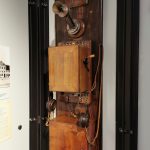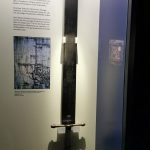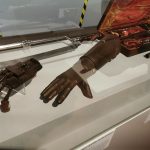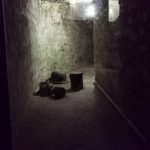SDAC Workshop: Museum Studies
Museum Artifacts in Everyday Life
On Friday, November 8, SDAC students met to explore the relationship between artifacts from the past and everyday life. Further, they were asked how those fragments of the past might relate to decision-making on multiple levels. The day’s seminar consisted of three parts, beginning with an opening discussion of several online museum objects. This was followed by a visit to the Erlangen Stadtmuseum, where students focused upon items used in everyday German life in earlier eras. The day concluded with a follow-up discussion to review each student’s choices. There, we discussed how they might be related to the larger topic of lifelong decision-making.
Students began by visiting a very fine anthropological museum website, filled with artifacts and detailed descriptions. They selected one key item (choosing from a wide variety of societies and artifacts), and presented it during the morning session. The group then discussed the uses of those items, and, following ethnographic practice, considered not just the manner in which they were supposed to be used, but also reflected upon possible ways, differing from standard usage, that they might have been used.
As a personal reflection upon their study, the students also chose one object from their own everyday lives and, as a comparison, asked the same questions about their own uses of their objects as they did of those they viewed in the museums. Echoing the words of the anthropologist J.H.M Beattie, writing sixty years ago, the group engaged the idea that we should reflect upon cultural matters on a number of levels: “…what actually happens, what people think happens, and what they think ought to happen.”
In the end, SDAC students focused upon questions about decision-making, sometimes on the micro-level of daily and even hourly uses, giving new dimensions to students’ growing depth in thinking about decision-making across cultures in a wide variety of contexts.





